(June is among the precious few months between life-stilling cold and landslide-prone monsoons in the Himalayas. The passes are open – well, most of them – and the snow is only starting to muck over. June is when most riders do the epic Khardung La run, through Leh and Ladakh regions. A month that sticks to rider memories forever. This narrative from my ride is for all those heading out this year. Ride safe.)
A ride that lasts a fortnight, covering close to 3,000 km, through temperatures ranging from 45 to -8 degree Celsius, taking you over altitudes from 600 ft above sea level to 18,380 ft – the Ladakh run is epic in its scale as well as for the sheer diversity of the scenery that unfurls before you. Organised individually or in groups from Delhi, the run is undertaken mostly in the month of June – when the snow-covered passes are open and the weather is generally rider-friendly. Even then an occasional thunder shower leading to landslides or snowstorms in the high passes of Leh or Manali where you could be stuck for hours, or days, cannot be ruled out.Day 1: Delhi to Jalandhar (380km)
The sweltering summer heat of Delhi takes a respite only after you pass the industry-heavy city of Jalandhar in northwest Punjab. Day one is a near-straight ride of 380 km into this erstwhile state capital before Chandigarh was formed. The ride is through National Highway 1 through a smouldering tarmac with temperatures hitting 45 degrees Celsius. Be careful when passing by trucks – they travel in clusters and some even race with each other to beat the afternoon boredom or digest a heavy lunch. You pass by Panipat, Karnal, Ludhiana before entering Jalandhar. The options for stay are plenty here.
Day 2: Jalandhar to Patnitop (280km)Around lunchtime and 200 km later, be careful not to ride into Pathankot – which many riders do as further ahead is Jammu. The confusing bit is your destination – which is Srinagar, the capital of Jammu and Kashmir. Stick to Pathankot bypass then exit from the National Highway at Mansar towards Samba. From here the climb begins – close to 100km of scenic ride through fast fading light and by dusk you reach Patnitop, where the first chills of Kashmir greets you at 6,600 ft.
Day 3: Patnitop to Srinagar (193km)
Patnitop to Srinagar is less than 200 km and every bend unfurls a fertile, verdant valley or a pretty tarn, however do not tarry as untimely summer showers lash down leaving the non existent roads mucked up and slippery. The strategic and heavily guarded Jawahar tunnel which ensures round-the-year connectivity between Srinagar and Jammu is along the way, the other side of which is Quazikund town. All the dhabas – wayside restaurants – lining the road will have the same menu, try and pick out one which has handy charpoys.
Despite widely reported unrest in the Valley, Kashmiris have woken up to the potential of tourism which is goes on mainly unhindered. Check into one of the numerous houseboats on the Dal Lake for a lifetime experience, to and fro from which you will be ferried in shikharas – the Indian equivalent to Venetian gondolas. You can hire one to take you around the Lake – a 16 km shoreline encompassing a boulevard featuring parks and gardens from the Mughal era. Allow yourself a day off in Srinagar before proceeding to Kargil. There are many things to see and do in Srinagar – the numerous alley shops selling authentic handicraft items or sampling Rogan Josh a regional delicacy, or if its drizzling stay put sipping a glass of steaming kahwa – a traditional green tea usually accompanied with homemade biscuits.Day 5: Srinagar to Kargil (200km)
The Srinagar – Leh Highway heads out northeast and approximately 90km into your ride, you pass by the spectacular Sonamarg (Golden Meadow), an alpine valley along the Sindh River and bound by Kolhoi and Malchoi Glaciers rising against a cerulean sky. The road from Sonamarg till Zoji La is virtually washed out most part of the year and the embankment is plied high with snow. Passing by Drass – which saw some serious action during the Kargil War – you will be in Kargil before sunset.
Day 6: Kargil to Leh (215km)
From the heavy militarised zone of Kargil, you ride southeast, through a landscape which appears to be changing with the people – numerous Buddhist Gompas dot the road and nomads with prayer beads tend to their flock. From Fotu La – the highest point along the highway – you begin a slow descend eastwards toward Leh. Use the next day for rest as some heavy motorbiking is coming up over the next days.
Day 8: Leh to Hunder (125km)This is essentially a detour for Khardung La – the highest motorable point in the world. Then, there is also the Nubra Valley with its pleasant cool sands too. But befor that you have to negotiate at least an hour-long traffic at the South Kullu checkpoint – all waiting for their necessary clearances from the border security personnel. Carefully passing by puddles and loose rocks that have recently fallen onto the road, you reach Khardung La. From Khardung La, you trace the Shyok River which originates from the Rimo Glacier, flows southeast before joining the Pangong Range. The landscape is barren save an occasional shock that juts out of a mesa, the mud houses have shingles kept in place by heavy rocks – on the farther bank of the Shyok starts the Karakoram Range and further ahead the Tibetan plateau. Once you check into your hotel in Nubra Valley, go look up the double humped dromedaries – remnants from the Silk Route trading days.
Day 9: Back to Leh / Day 10: To Pangong and back (300km)
Passing by the Khardung La – this time you enter from the North Kullu checkpoint – you are in Leh where you will need all the rest for the next day is Pangong. A picturesque river along the Indo-Tibetan border, it is well worth the 16-hr trip for the one hour you get to spend there. Accommodations are limited and getting camping permissions are impossible considering it is disputed territory. (Leh to Pangong Lake and back is 300km)
Day 11: Leh to Sarchu (240km)Leh to Sarchu takes you through some breathtaking landscapes – including the impossibly straight Morey Plains which goes on for 40 km and leads to the Gata Loops which are a series of hairpin bends causing a rapid descend towards Kangla Jal. More arid and barren land with snowcapped mountains hovering in the horizon, a rare hutment with few planget cattle and brooding yakkers tending them in. Dust storms are frequent in these parts. At Sarchu as well as Jispa the next day, accommodation is mostly in tents put up on roadside by enterprising locals – for hire on a per head basis. If the weather is clear, sleep under the dazzling stars in your sleeping bags.
Day 12: Sarchu to Jispa (100km)
Wide and deep water crossings mar your progress from Sarchu to Jispa in Himachal Pradesh, notably at Barlacha La. Though the distances are comparatively the least, the roads will invariably be mucked up due to unseasonal rains and possible heavy traffic.
Day 13: Jispa to Manali (140km)From Jispa to Manali you pass through Rohtang La (‘pile of corpses’) which many find a trickier climb than Khardung La. From Rohtang La you reach Manali through lush green coniferous forests clinging to winding lanes. Tourist cars and lorries ferrying goods scurry in both directions till you reach Manali, the popular hill station in Himachal Pradesh. Manali is a good day to take a break – a very tourist-friendly town with a pleasant climate, enjoy the cool climes before you head into the smouldering plains the next day.
Day 14, 15: Manali to Chandigarh (300km) to Delhi (260km)
From Manali to Chandigarh you follow the Beas River; an exhilarating ride till you reach Chandigarh. Chandigarh in Punjab is a neatly laid out city – which enhances your chances of getting lost as well. Leave for Delhi as early as possible the next morning – because the temperatures would be hovering in the 40s.
You are sure to be missing the ride already seeing the many riders who take the Delhi – Chandigarh – Manali – Leh route and back, thus avoiding Kashmir. For you too, in case of any turmoil in the Valley, this is also an option.


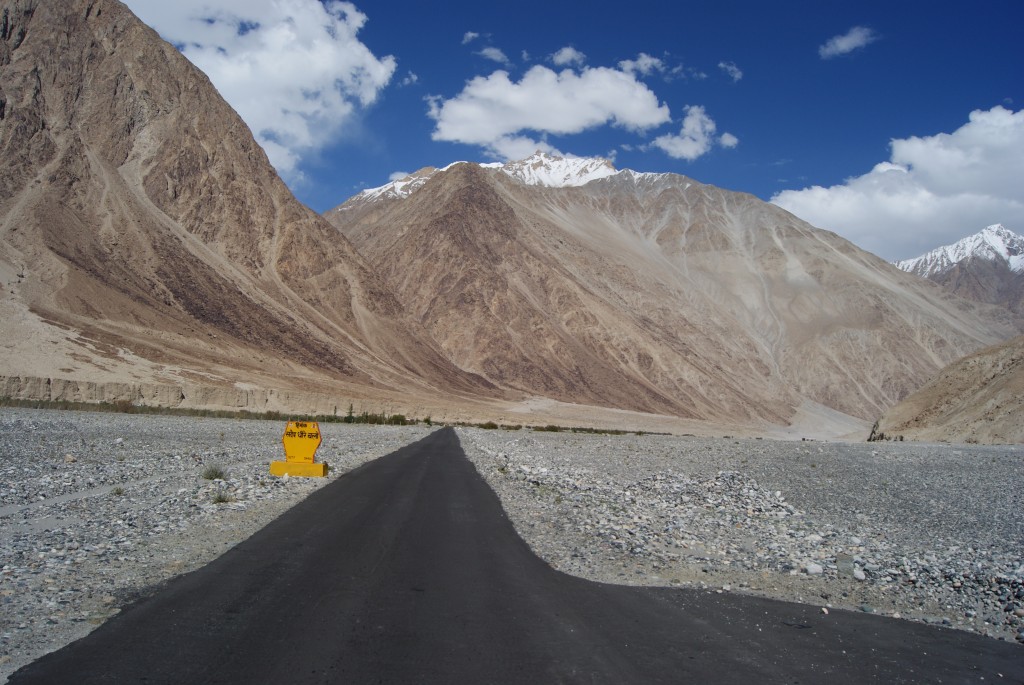
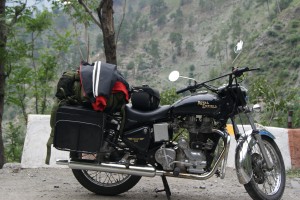
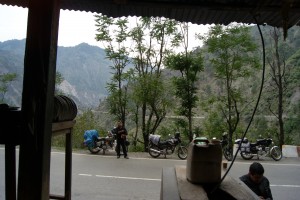
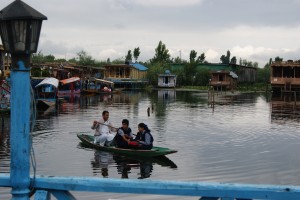
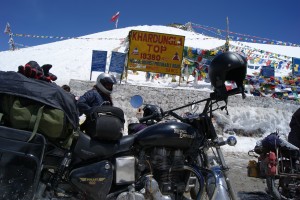
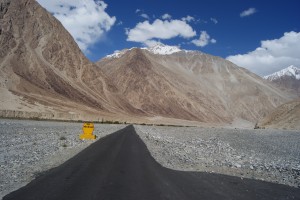










hey!
i wish to make an awesome trip to leh this summer. i would need a group….can u suggest a group/organiser who’s dependable and will ensure a great trip…
looking forward!
thanks!
There are many groups from Delhi who organise trips to Leh and Ladakh… like Team 456. Good folks.
Thank You
I am always searching about Kargil Laddakh. I am from Pakistan but we have a strong relationship with Kargil Laddakh. I belong to Sakrdu Baltistan Pakistan, we are the close border to Kargil Laddakh. We speak the same Language name BAlti.
Many of our relatives ate there in India Kargil Laddakh.